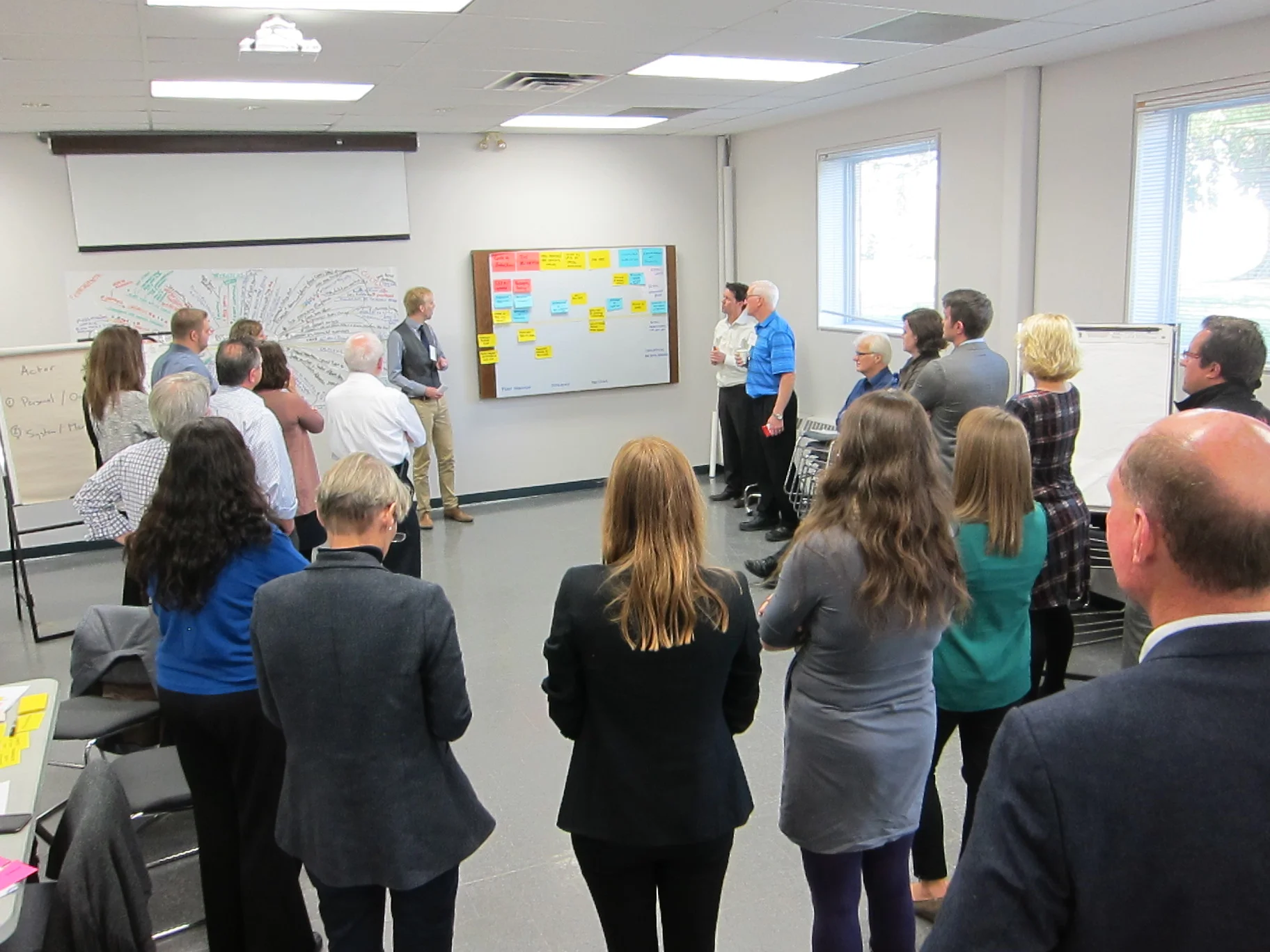promoting collaboration + increasing innovative outcomes
Designing innovation tools to help diverse groups to collaborate and problem-solve together.
At the MaRS Solutions Lab, I led the design of tools like collaborative journey mapping exercises for groups ranging from 5 - 500 people. I was also responsible in conducting user research, facilitating workshops, and designing all of our printed and web-based outputs.
Below are 2 case studies of the flow of tools we would design for a client.
case study #1
New Solutions for Youth Employment Lab
new york city
Client: Rockefeller Foundation
Opportunity: The Rockefeller Foundation is working with Starbucks to create employment for opportunity youth in cities across USA. In order to facilitate the collaboration between a diverse group of stakeholders (~20), they asked us to design, deliver, and facilitate the 3 in-person labs in New York City.
Process overview
sample #1
Computer Model
In collaboration with the Waterloo Institute for Social Innovation and Resilience, we incorporated a simulation game into our process to build participants' empathy for how their collaborative decisions result in real social impacts.
The computer model was built by Kirsten Robinson, and received very positive feedback from both the participants and clients on its effective to build a collective understanding of the scale of the problem space.
sample #2
Business Model Canvas - Systems Edition
In preparation for the series of workshop, we re-designed the well-known Business Model Canvas to include 'Systems Impact' to stress our collective desired outcomes. We chose to use a large poster-format to support team collaboration. However, we have later discovered that in certain settings, printing them as a page-by-page exercise can be more effective if the exercise is short or the audience is not as familiar with the tool. The tool was so well-liked that participants asked if they could buy prints from us.
Learn more about The Rockefeller's Foundation youth employment initiatives HERE.
Through our work with WISIR, I have also helped them design and edit their Social Innovation Lab Guide.
Press / Shoutout:
The Bridgespan Group, Stanford Social Innovation Review, The Rockefeller Foundation
case study #2
Ontario Tender Fruit Lab
niagara, ontario
Clients: Metcalf Foundation, Greenbelt Foundation, J.W. McConnell Family Foundation, Ontario Trillium Foundation
Opportunity: The tender fruit industry in Ontario is at a breaking point - although the demand for local and organic tender fruit is increasing, there are a plethora of issues ranging from financial sustainability of farming to imported fruit that makes the supply network less profitable, less sustainable, and less effective.
We were asked to conduct 4 months of user research and deliver 3 workshops over the span of 6 months to help build innovative solutions moving forward.
sample #1
Systems Mapping
Systems Mapping is a great exercise to do when and if a group of participants do not have a high level of trust for one another. In addition, it helps to showcase a large-scale system in its entirety from the 1st person perspective, allowing participants to step out of their role and understand others' motivations and frustrations in the system.
This exercise was especially enlightening for this project due to the lack of communication and collaboration amongst groups.
sample #2
Design Brief
A Design brief is both an artefact and problem framing document that helps participants to understand the scope of the problem and set expectations for what is to come during the design sessions. I had a lot of fun designing this particular one due to a few design constraints inspired by our user interviews, including the need to move away from green + yellow colour palettes - many corporations see those initiatives as biased towards farmers and will therefore may be more reluctant to collaborate.
Check our the Design Brief HERE.
Learn more about the project HERE.
I love having conversations about collaborative design tools + exercises. Feel free to drop me a line to share with me your experiences (especially surrounding how culture affects these exercises) or to chat more!

